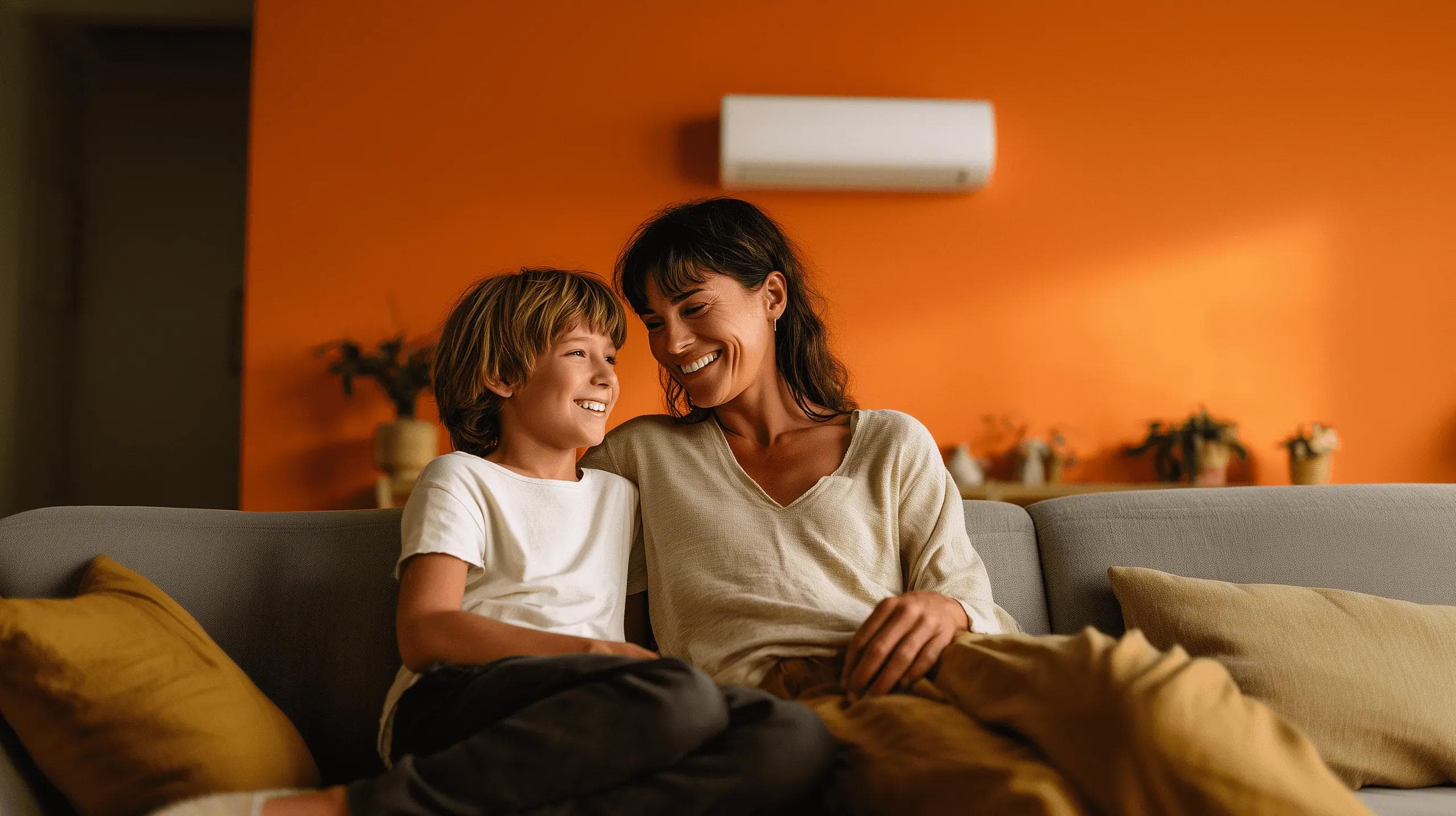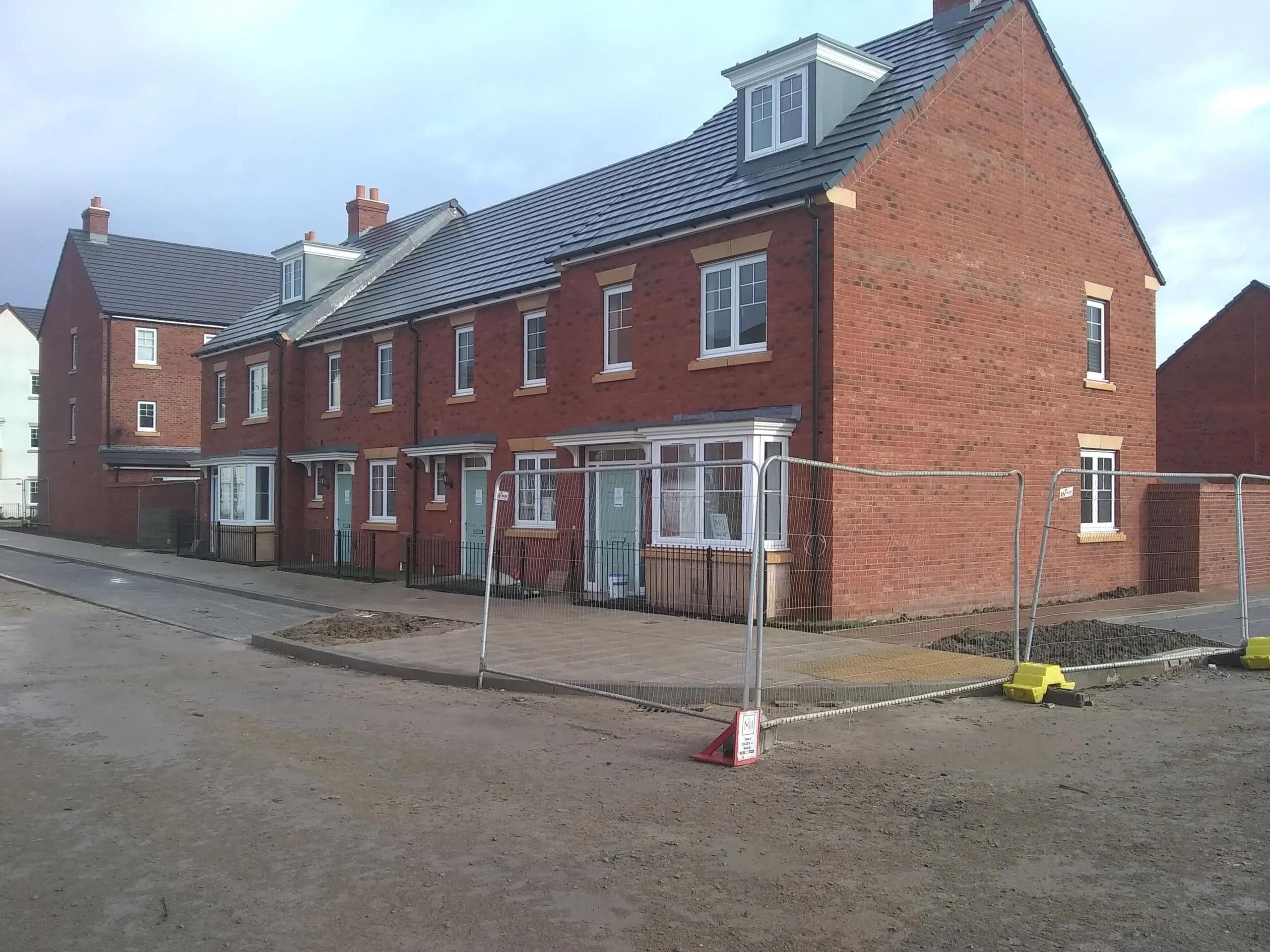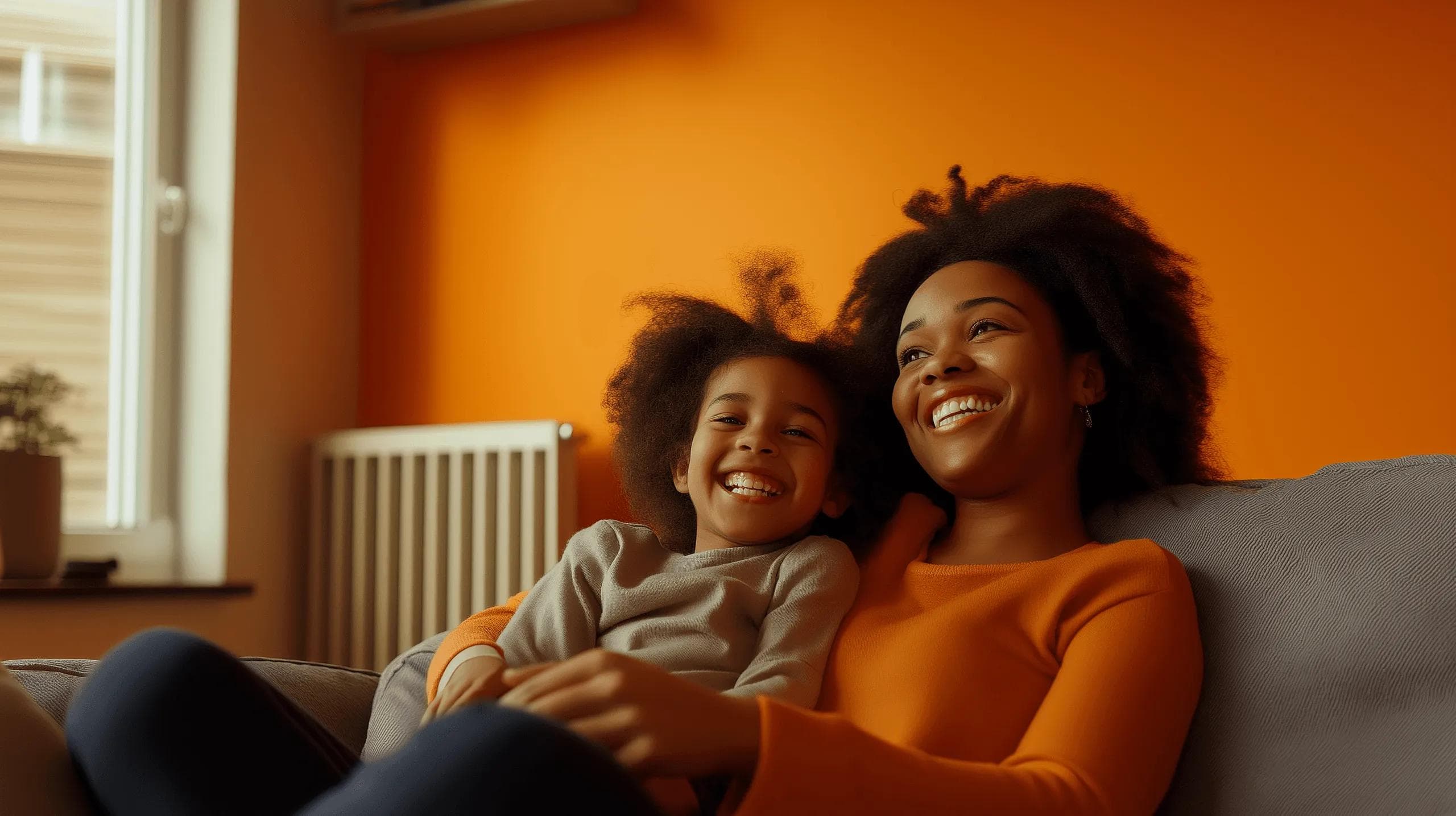Cost effective cooling with ground source heat pumps

UK summers are getting warmer, so our homes risk overheating. We need better ways to keep buildings cool without our bills increasing or heating up the planet.
Ground source heat pumps can offer efficient and effective cooling because the temperature below the ground stays at a constant temperature throughout the year. With a low energy passive cooling heat pump system, naturally cooler underground temperatures can be used to cool indoor spaces.
This page explains how they work, the difference between passive and active cooling, and the best cooling for your projects.
Heat pump cooling navigation
Can a heat pump cool a house?
Do heat pumps cool in the summer?
Heat pumps can cool in the summer. In warmer weather, a ground source heat pump system can operate in passive or active cooling mode depending on your needs and set-up.
Passive cooling is ideal for homes and apartments, while active cooling is better for commercial spaces with consistently high temperatures.
Air source heat pumps, however, can only offer active cooling.
80% of UK households experienced overheating in 2022, up from just 18% in 2011 - University of East London
What is heat pump cooling?
Heat pumps can offer cooling using the same unit as they do for heating. Ground source heat pumps can heat and cool a home by adding a cooling module to the set-up.
There are two main types of cooling:
- Passive cooling – Passive cooling uses the ground’s natural temperature to cool indoor spaces, without turning the heat pump on. It’s low energy, low cost and unique to ground source systems.
- Active cooling – Active cooling reverses the heat pump cycle, pulling heat out of the building and returning it to the ground. It’s better suited to buildings with higher or continuous cooling needs.
Cooling with ground source heat pumps is an efficient and effective way to keep buildings cool. While ground source heat pumps can offer active cooling, like air conditioning, where they shine is passive cooling – a more efficient and sustainable form of cooling that offers overheating protection.
How ground source heat pumps keep you cool
What’s the difference between active and passive cooling?
Although they are both types of cooling, active cooling and passive come with different benefits.
Feature
Energy use Best for Installation Running costs Bonus benefitPassive cooling
Very low (heat pump off) Homes, apartments Module or plate heat exchanger Minimal Recharges ground arrayActive cooling
Moderate (heat pump in reverse) Offices, commercial spaces Integrated system design Higher than passive, still efficient Recharges ground array
What is Kensa’s Passive cooling module?
Kensa’s Passive Cooling Module is a simple add-on for the Shoebox heat pump. It includes the wiring and control components needed to enable passive cooling, and can be installed with new systems or retrofitted. For Evo heat pump models, a plate heat exchanger delivers the same benefit.

Passive cooling case study
In Cardiff, we’ve shown how ground source heat pumps can deliver more than just low-carbon heating. A property on a new housing development there now enjoys year-round comfort thanks to our networked system’s passive cooling feature – an affordable way to stay cool in summer by drawing naturally cooler temperatures from the ground.
Running costs at this site are impressively low, at around £3–£6 a month, and the system recharges the ground loop while cooling, boosting heating efficiency when winter comes. It’s a simple, sustainable upgrade that makes homes future-ready – proof that with Kensa, comfort, cost-effectiveness, and climate responsibility go hand in hand.

How does passive cooling work?
Passive cooling uses the ground's naturally cool temperature to help keep your building comfortable in the warmer months, without even turning the heat pump on.
In the summer, the ground stays cooler than the air outside. We can use that cool ground temperature to cool indoor spaces gently.
We do this by adding a simple module directly to the Shoebox heat pump or via a separate plate heat exchanger if you’re using the Evo. This lets the cooler temperatures from the ground flow into your building while bypassing the heat pump.
The cool is transferred through a heat exchanger and delivered into your space via a system like a fan coil or MVHR unit. It’s an easy, low-energy way to stay cool, using what’s already under your feet.
What are the benefits of passive cooling?
Low running costs
Passive cooling uses the ground’s natural temperature instead of energy-hungry systems like air conditioning. Since the heat pump’s compressor is not needed, it only uses small circulation pumps, keeping energy use and running costs low.High energy efficiency
Passive cooling delivers comfort with very little energy input. It becomes even more efficient when paired with our Networked Heat Pump systems, where waste heat is recycled to improve winter heating performance.Lower carbon footprint
No need for refrigerants or energy-intensive cooling units means lower emissions. It’s a natural, low-carbon alternative that helps meet net-zero goals.Reduced infrastructure costs
The system balances itself out in developments with heating and cooling demands. That can mean shallower boreholes, fewer materials, and lower upfront costs.Smart heat recycling
Instead of putting more heat outside and worsening overheating issues, the system returns it to the ground, recharging the array and supporting year-round efficiency.Quiet and discreet
No noisy outdoor units or bulky air con systems—just simple, silent comfort that blends into any development.

What does passive cooling cost?
Passive cooling is a low-cost upgrade with long-term savings. Since it works without powering the heat pump, it only uses small circulation pumps, cutting running costs.
Installation costs depend on the system and project type. The passive cooling module is simple to add to Shoebox models.
Shared infrastructure brings the cost down even further in developments using networked heat pump systems.
Our passive cooling technology isn’t just low-carbon – it’s proven to keep homes at a consistently comfortable temperature, even during a heatwave. In Cardiff, a property with Kensa’s networked heat pump stayed around 7°C cooler indoors than outside on the hottest summer days.
This performance comes at an ultra-low cost of around 50p per day to run for 8 hours based on current energy prices (27p/kWh) – while also recharging the ground loop, so the heating system works more efficiently in winter. It’s smart comfort, all year round.

What projects suit each cooling type?
Passive cooling:
Great for homes, apartments, or multiple flats connected to a shared system.
Active cooling:
Best for buildings that need stronger or year-round cooling, like:
- Offices with large glazed areas
- Server rooms and data centres
- Retail spaces
- Mixed-use buildings
Do heat pumps and air conditioners work?
Heat pumps can work better than air conditioners. Passive cooling, in particular, uses far less energy than a typical air conditioning unit. The ground source heat pumps sit neatly inside your home without needing bulky external units.
Why choose cooling with a ground source heat pump?
Passive cooling is a highly effective feature that’s entirely unique to ground source heat pumps. It provides much-needed comfort in the summer, uses very little energy, and does so without a bulky outdoor air conditioning unit. As UK summers become longer and hotter, this capability offers a sustainable way to cool homes that are increasingly at risk of overheating.
David Broom, New Build Partnerships Director, Kensa
What is active cooling with heat pumps?
Active cooling reverses the heat pump cycle to remove heat from the building and return it to the ground.
Warm air from inside passes through a heat exchanger. The heat is absorbed by the ground loop fluid, lowering indoor temperatures and recharging the ground array in the process.
How to install a ground source cooling system
Passive cooling:
Add the cooling module or heat exchanger, depending on your system. Easy to retrofit or include in new builds.
Active cooling:
Requires full design integration and may include fan coil units, MVHR, or dedicated chilled water loops.
Is passive cooling a natural cooling system?
Passive cooling is a natural cooling system. It uses the ground’s natural temperature to cool indoor spaces.